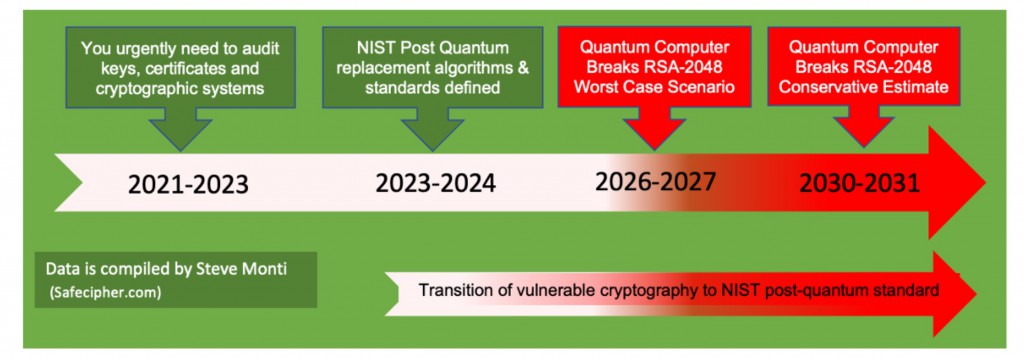
Transitioning from classical cryptography to quantum cryptography presents unique challenges
(Compiled and produced by Steve Monti SafeCipher.com)
Migrating to SHA-2 from SHA-1 will be like a walk in the Park compared to a Quantum Algorithm migration
Transitioning from classical cryptography to quantum cryptography presents unique challenges that differs significantly from previous transitions of cryptographic algorithms, such as from DES to AES or SHA-1 to SHA-2. This (me around a drop-in replacement is not possible because post quantum algorithms are fundamentally different.
Classical cryptography relies on the computational limitations of classical computers, while quantum cryptography is based on the principles of quantum mechanics. Quantum computers operate on quantum bits (qubits), which can exist in multiple states simultaneously (superposition), enabling them to solve certain problems much faster than classical computers.
Quantum algorithms break classical schemes – quantum algorithms like Shor’s algorithm can efficiently solve problems that are intractable for classical computers, such as factoring large numbers, which is the basis of RSA encryption.
This means many current cryptographic algorithms could be easily broken by a sufficiently powerful quantum computer, necessitating entirely new types of cryptographic algorithms.In classical cryptography, algorithms can often be replaced with more secure versions (e.g., moving from DES to AES) without fundamentally changing the underlying principles.x
However, quantum cryptography often requires completely different approaches and principles, like quantum key distribution (QKD), which has no direct classical equivalent.
The implementation of quantum cryptography will require new infrastructure and technology. Integrating quantum cryptographic solutions into existing systems poses significant compatibility and interoperability challenges. Systems will need to be capable of operating both classical and quantum cryptographic protocols during the transition period.
In summary, transitioning to quantum cryptography is not a straight forward replacement but involves embracing new principles, technologies, and infrastructures that are fundamentally different from those used in classical cryptography.